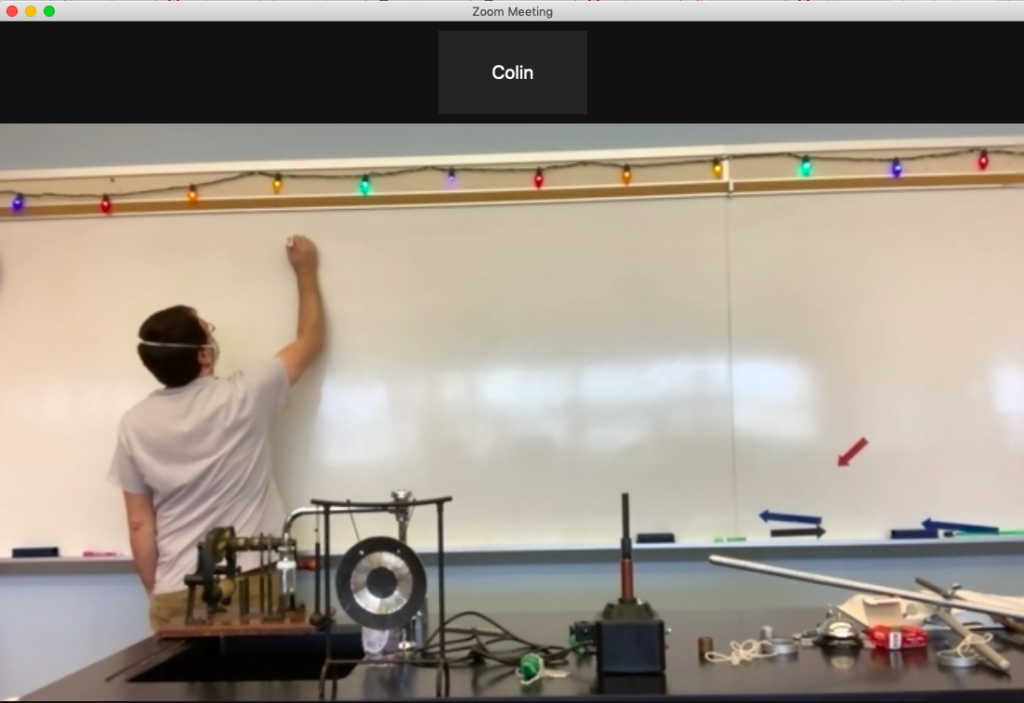Nayan Shankaran ‘24
During the past year, EA’s Center for Teaching and Learning (CTL) has committed to researching best practices and designing new professional development guidelines for EA faculty to rapidly cultivate the skills needed for online education, according to Dr. Erin Rehel, EA’s Director of Institutional Effectiveness.

Photo courtesy of Colin Kick ’22
In 2020, every EA teacher participated in professional development for online teaching. Dr. Rehel explains, “I don’t know of any other independent school that offered the rich, diverse summer programming EA did in 2020. Almost 1,000 students took over 100 different classes across all three divisions. Teachers designed brand new classes from Improv to App Design. This is a remarkable accomplishment in a normal year, never mind during a pandemic. EA did something that is both unique and impressive.”
CTL Coordinators Heather Dupont and Allison Schultz both note that as soon as the COVID-19 shutdown was impending last February, the CTL began to offer EA teachers “training sessions nearly every block of every day for two weeks leading up to the close of school.” This training continued to evolve and further develop in the spring and summer of 2020. “The CTL Team spent all of May and June creating a course for all faculty members to take asynchronously during the summer months. That course included a minimum of 40 hours of work for all the teachers participating. It focused on assessments, student engagement, student motivation, organizing and planning online classes, managing the synchronous and asynchronous time effectively, and a great deal of teacher collaboration.”
This professional development was put to the test with a host of virtual summer courses. Noble Brigham ’20 reflects on his EA virtual learning experience during this time, saying, “The best teachers, like Mrs. Konopka, who taught Convince Me, have become really skilled at navigating [virtual learning]. They treat virtual learning like regular learning and do not lower the standards for students or themselves.” When comparing virtual learning at EA and his current Brown University experience, Brigham makes a point that “good teaching is good teaching, whether virtual or in-person. The best teachers and professors maintain high standards and don’t rely on asynchronous assignments but continue to encourage discussion and collaboration.”
The Science Department Chair Grace Limaye ‘90 describes how instrumental the CTL was “to fill a void last March when we shifted to remote learning. They provided training, resources, and online sessions [for teachers].” She attributes the CTL’s “24/7 work for weeks to getting [virtual] courses up and running.” Limaye gives full credit to EA leadership and the CTL for their support to create virtual programs and a “5-week asynchronous course for teachers [last summer] that enabled them to share lessons, tools, and approaches online that we may not have been aware of.”
Although EA’s virtual classes this year have been structured and well-prepared, Liam Blair ’24 feels that “it is more efficient to learn in-person. I am more engaged in what I am doing, and the teacher can help more. In-person learning is better [for] the social aspect of being in school. That was something big missing from online learning.”
According to internal EA survey data about students’ online learning experience, Dr. Rehel shares, “Students found the classes to be on par with their regular EA classes in terms of breadth of material and rigor. Where students felt their for-credit summer classes did not match their in-person EA experience was in terms of the sense of community. This data point was a good reminder that building relationships between teacher and students and then among students in a class is an important part of any learning experience.”
Hollis duPont ’21 sends an important reminder that “[making] the classes free was a very strong aspect [of EA’s summer virtual learning program]. Removing the financial barrier allows many more students to take advantage of EA’s incredible offerings. In a year with so many conversations about equity and inclusion, I think this is especially important.”